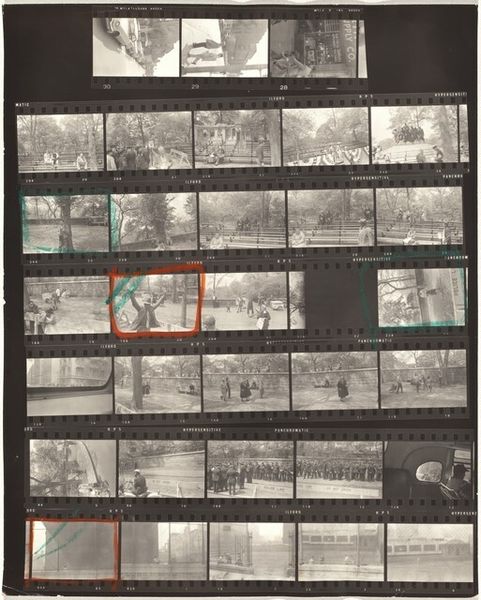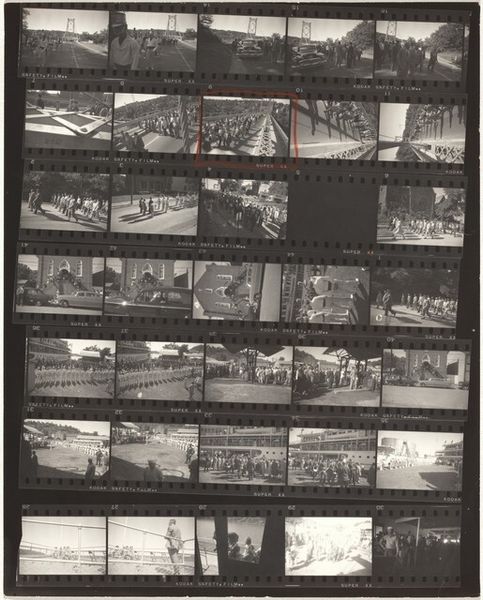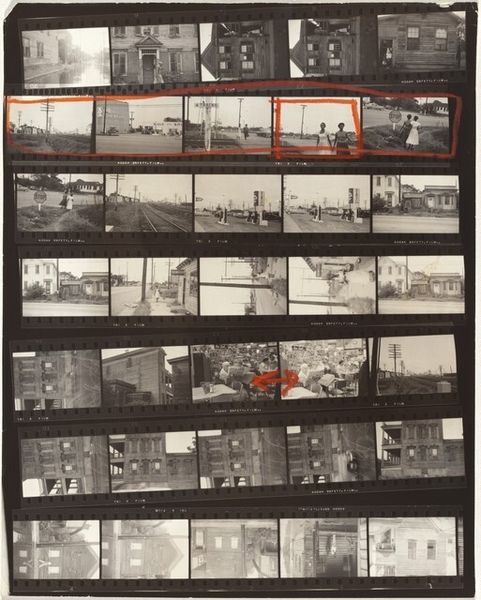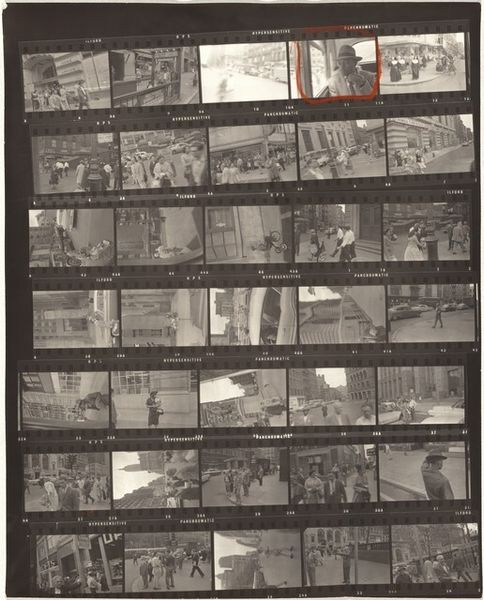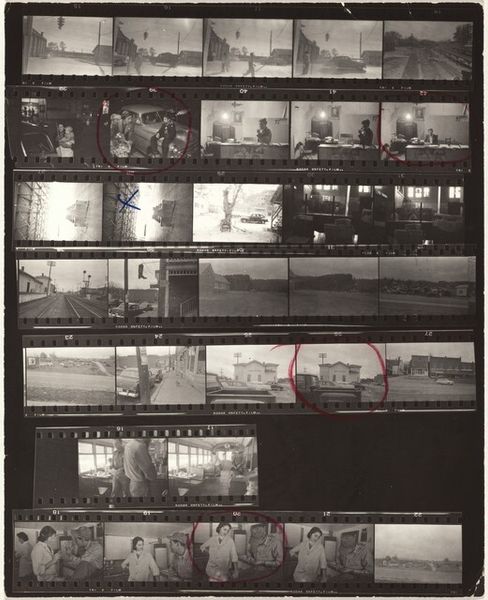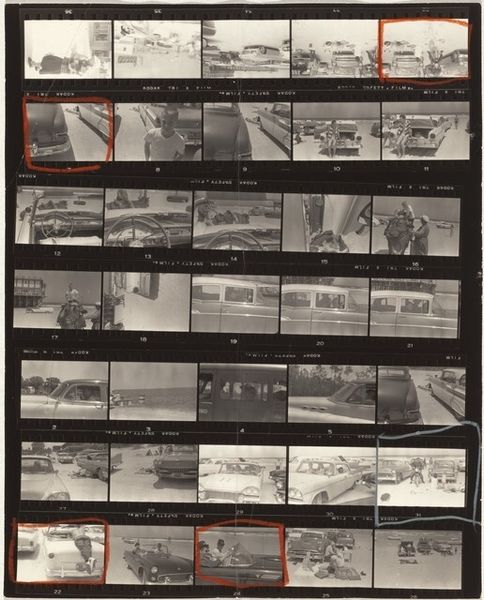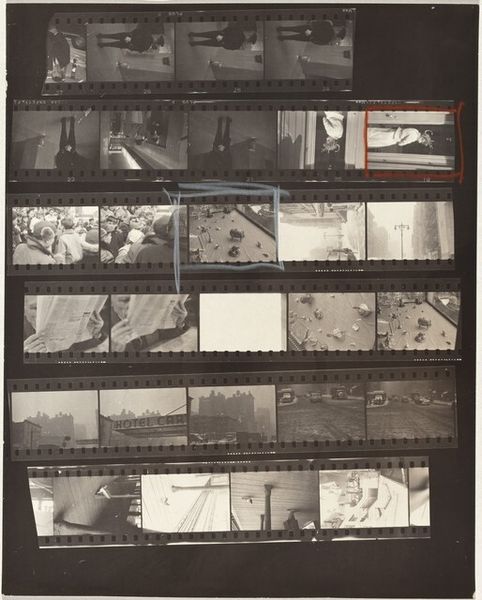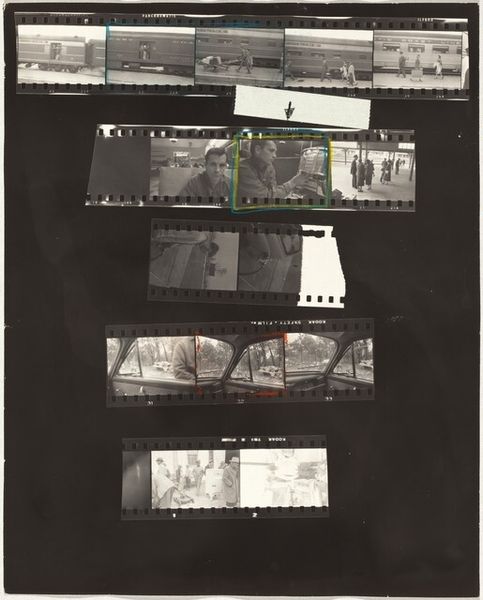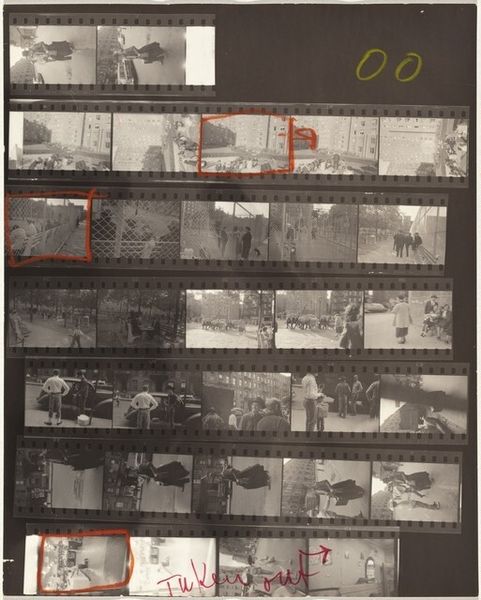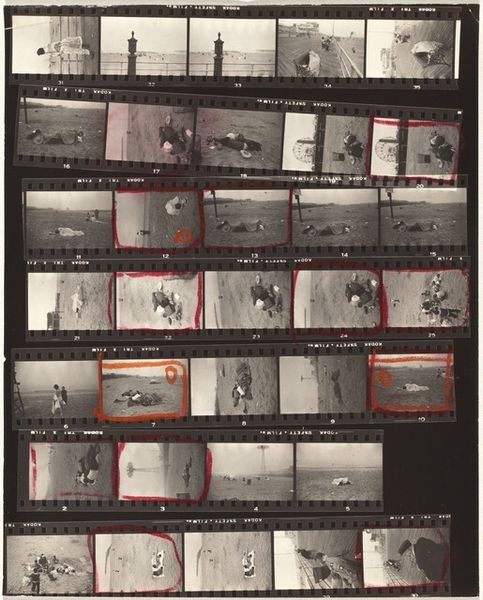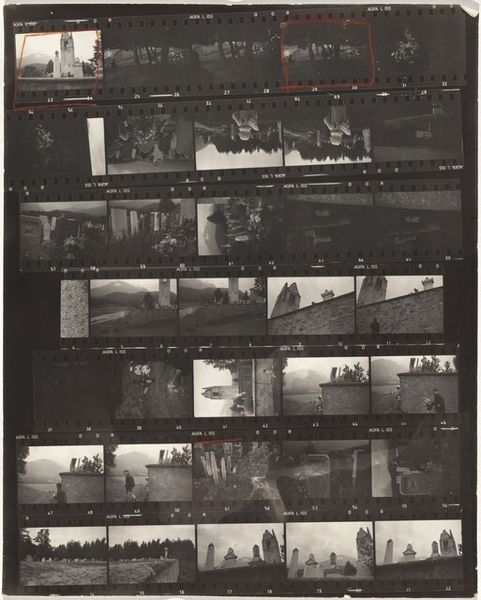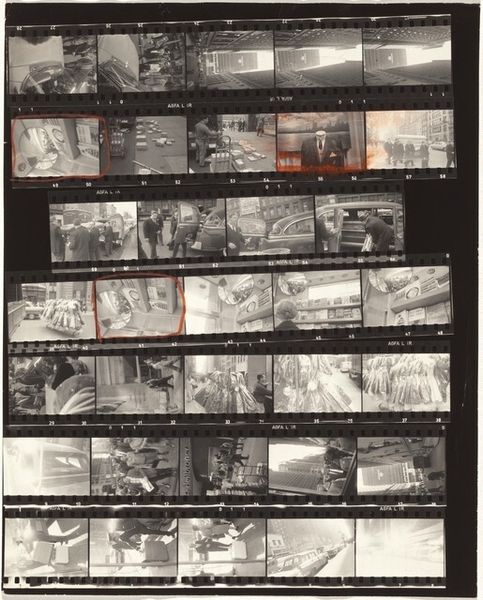
print, photography, gelatin-silver-print
#
portrait
#
film photography
# print
#
landscape
#
street-photography
#
photography
#
gelatin-silver-print
#
film
Dimensions: overall: 25.2 x 20.3 cm (9 15/16 x 8 in.)
Copyright: National Gallery of Art: CC0 1.0
Editor: This gelatin silver print is titled "Florida 10" by Robert Frank, created in 1958. What strikes me is its fragmented nature, resembling a film strip or a contact sheet. It feels raw and unfiltered. What can you tell me about Frank's intent behind this type of presentation? Curator: Well, what you're seeing is a direct window into Frank’s working method. He documented America in a way that had rarely been done before, but the presentation in this film strip format is significant. It challenges the established norms of fine art photography. Instead of a perfectly composed, single image meant for display, we get a behind-the-scenes view. He is exposing his method. Why do you think Frank abandoned perfection in this image? Editor: Perhaps to reflect the realities he encountered on the road, unfiltered and unedited? It feels like a deliberate rejection of the idealized American image. Curator: Exactly! And in doing so, he was really reflecting back on the viewer, forcing one to grapple with these socio-political issues such as the inequality embedded within America's physical infrastructure during that time, the very railways that connected urban and rural worlds, white and black worlds. Look at the number '659'. What feelings do you sense it evokes in the composition of all these many strips? Editor: Seeing "659" repeated evokes a sense of monotony. It’s like Frank’s emphasizing a system, a machine, almost dehumanizing. Is he trying to reveal a cold and unfeeling core? Curator: Indeed. His perspective stirred significant controversy initially. Frank made a pointed decision to frame ordinary places like Florida from a place outside of paradise. Editor: So this image, in its presentation and content, directly confronted established ideals and forced viewers to confront a different America. That is powerful. Curator: Yes, it reveals that art is as much about process and politics as it is about the final product. It made an indelible mark on photography’s role in the shaping of culture, in a rapidly-changing 1950’s America.
Comments
No comments
Be the first to comment and join the conversation on the ultimate creative platform.
